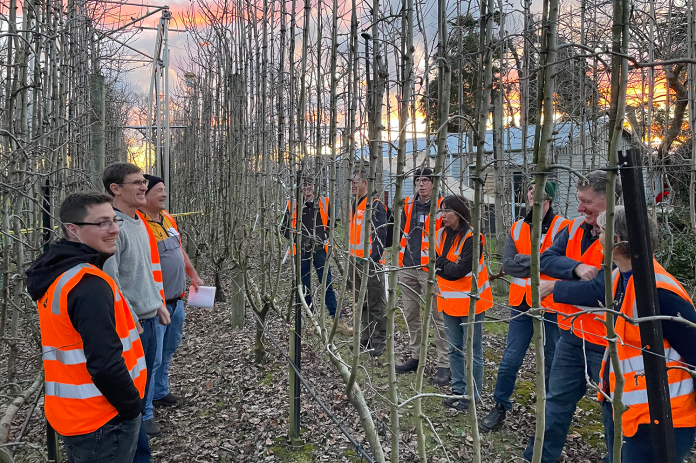A team of scientists, engineers and economists have set out to “reimagine” what orchards in the future could look like through a $13.6 million program.
Delivered through Hort Innovation and led by Agriculture Victoria, the five-year program will establish research sites across Australia to find out whether transitioning to narrower orchard systems could bring benefits for pome and stone fruits.
Narrow orchard systems feature 2m spaces between rows of trees, keeping the canopy narrow to expose fruit and leaves to enough sunlight to maximise yield and fruit quality. This approach is said to be attractive to field workers and amenable to robotics, automation and sensing technologies, and has the potential to use less labour, energy and increase the efficiency of inputs.
Hort Innovation CEO Brett Fifield says the transformative research has boosting grower profitability top of mind.
“This future-focused investment has the potential to transform the way the horticulture sector designs their orchards,” he says.
“It was recently estimated that workers could climb around 10,500 metres per hectare in a season to complete tasks such as harvest, pruning and thinning. Mount Everest is 8848 metres.
“With growers at the forefront of the program’s aims, this research presents an opportunity to find more efficient to manage orchards that are more profitable, more consistent, more resilient and safer.”
Agriculture Victoria research leader in crop physiology Dr Ian Goodwin says the research team will be estimating the benefits of narrow orchard systems.
“Through establishing experimental sites across the country, our research team is anticipating gains in marketable yield as well as the accuracy and efficiency of sensing and robot orchard operations (such as crop load estimation, pruning, thinning, pest and disease monitoring, and fruit picking) in the narrow row orchards compared to existing tree training systems,” he says.
“In addition to field experiments, we will also undertake an economic study to determine the profitability of transitioning to narrow orchard systems and will compare the benefits and costs to current standard practices within the industry.”
The multi-disciplinary research team includes scientists, technicians, economists and engineers from Agriculture Victoria, Department of Primary Industries and Regional Development WA, the University of Queensland, South Australian Research and Development Institute, NSW Department of Primary Industries and Plant & Food Research.


